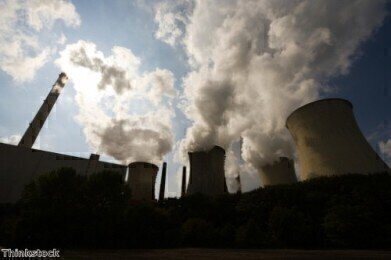Water/Wastewater
Funding Secured to Develop New Sensor Technology for Safe Shale Gas Extraction
Jul 14 2017
An exciting new project to develop a system for safe shale gas drilling in Europe – that is being delivered by a consortium comprising TWI Ltd (UK), Danish Technological Institute (Denmark), ZELENA INFRASTRUKTURA (Croatia), HGL Dynamics Limited (UK) and META Group S.R.L. (Italy) – has recently commenced and will run for a two-year period.
The technology at the heart of the ShaleSafe project will enable the identification and exposure of underground water held in aquifers that has been contaminated by chemicals related to shale gas exploration and management. This will be achieved by developing an automated system incorporating sensors that will continuously detect in-situ methane and organic compounds, including the additives used in hydraulic fracturing, and enable the quality of the underground water to be constantly monitored. In turn, this means that the operator can immediately be alerted when pollution is detected.
The natural gas produced within shale gas plays, also known as formations, presents different technical and environmental challenges when compared to conventional gas plays. The key issue causing concern is related to the use of a process known as hydraulic fracturing, or ‘fracking’, in which a mixture of water, sand and chemicals is pumped under high pressure into the underground layer in order to break apart the rock and release the gas.
The main environmental impacts in relation to shale gas extraction include underground water contamination; water abstraction; greenhouse gas emissions; and its potential effect on landscapes and local communities. The most imminent challenge for the oil and gas industry in Europe is to be able to demonstrate and guarantee, safe shale gas exploration and extraction in order to address the associated environmental concerns.
Underground aquifers can become contaminated by methane and chemicals used during the fracking process. Currently, possible pollution is detected by taking samples at monitoring wells and analysing them in a laboratory. However, the process of collecting, preparing and transporting groundwater samples is prone to errors and, most importantly, analysing them can take several weeks, allowing pollution to go undetected for some time.
Amina Boughrara Salman, Senior Project Leader and ShaleSafe Project Co-ordinator at TWI explains 'There is an industry wide need to develop and implement technologies that can continuously, reliably and cost effectively monitor environmental risks related to the exploration and production of shale gas.' 'Therefore, the ShaleSafe project aims to provide shale gas exploration companies with a system that will enable them to meet the requirements of compulsory environmental impact assessment regulations in respect of sub-surface operations.'
The ShaleSafe project has received funding from the European Union’s Horizon 2020 research and innovation programme under grant agreement No 691527.
Digital Edition
IET 34.2 March 2024
April 2024
Gas Detection - Biogas batch fermentation system for laboratory use with automatic gas analysis in real time Water/Wastewater - Upcycling sensors for sustainable nature management - Prist...
View all digital editions
Events
Apr 30 2024 Melbourne, Australia
Apr 30 2024 Birmingham, UK
May 03 2024 Seoul, South Korea
May 05 2024 Seville, Spain
May 06 2024 Minneapolis, MN, USA


















